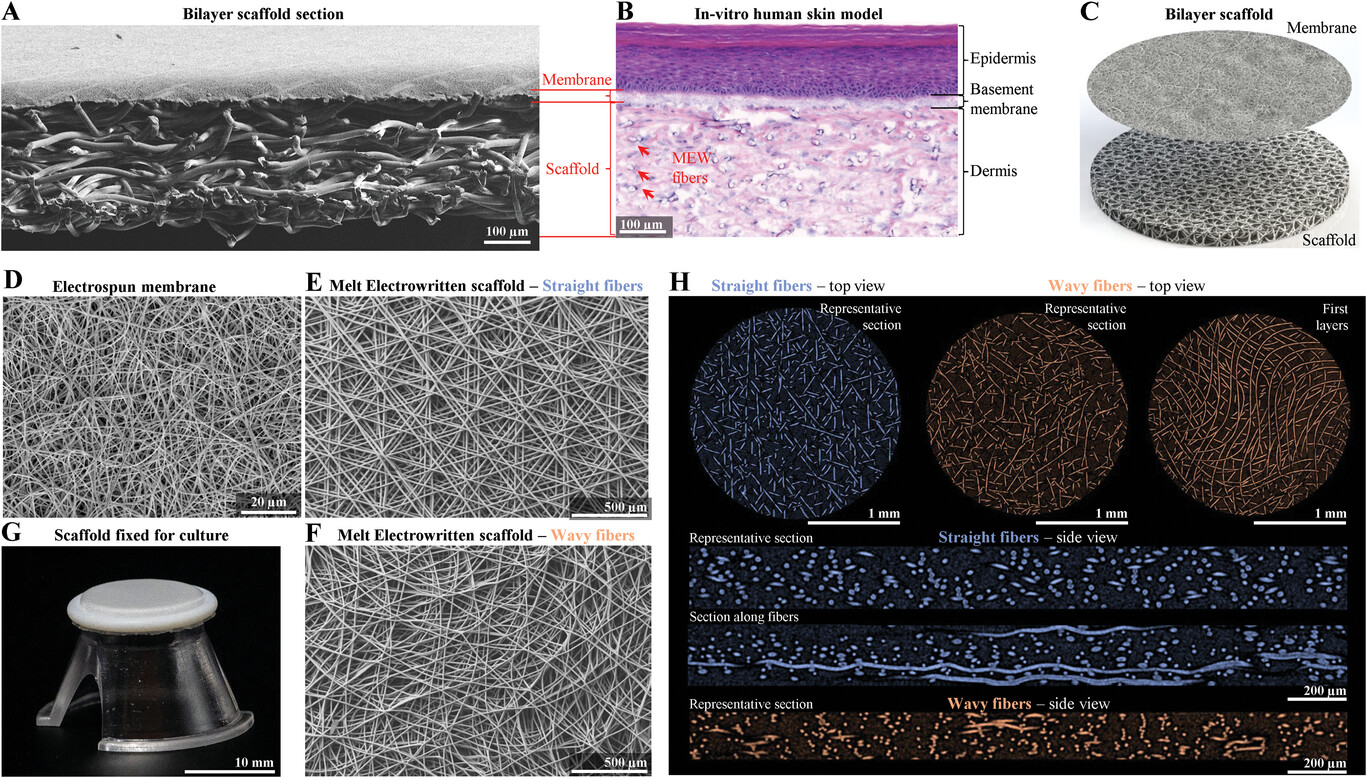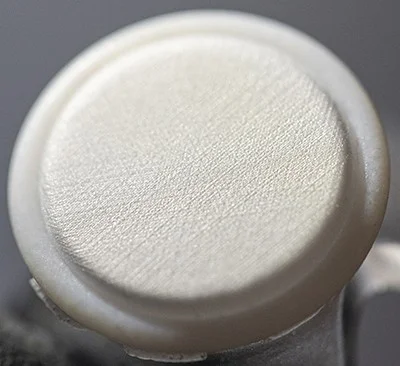A giant in the beauty industry, L’Oréal (EPA: OR) has made strides in skin research since the 1980s and, as of 2015, the company began exploring bioprinting. Recently, the brand unveiled an innovative reconstructed skin model. It achieved this using a special bioprinting method to quickly and precisely create structures similar to natural skin. This breakthrough could revolutionize how companies like L’Oreal test cosmetics and skin treatments, making it safer and more effective to evaluate product performance and its effects on the skin. Additionally, it promises to advance medical treatments, such as improving wound healing and developing personalized skin grafts for burn victims.
This skin model was developed in collaboration between L’Oréal’s Advanced Research teams and Professor Paul Dalton from the Phil and Penny Knight Campus for Accelerating Scientific Impact at the University of Oregon. Their research has been published in the journal Advanced Functional Materials as “First Advanced Bilayer Scaffolds for Tailored Skin Tissue Engineering Produced via Electrospinning and Melt Electrowriting.”

A 3D printer making the extremely fine strands used to create a new generation of artificial skin. Image courtesy of the University of Oregon.
As part of the collaboration, researchers from Dalton’s lab and L’Oréal co-developed plastic scaffolds that mimic the extracellular matrix via a network of finely structured 3D printed threads. Then, L’Oréal researchers grew cultured cells in those scaffolds to create the artificial skin, with different cell types growing in each layer. The membrane prevents the cells in the different layers from mixing as they develop.
“Other attempts don’t have the same layering—it actually looks like real skin,” said Dalton, who is also the Bradshaw and Holzapfel Research Professor in Transformational Science and Mathematics.
To make the porous scaffold, members of Dalton’s team used a 3D printing technique they developed called melt electrowriting (MEW). MEW uses an electric field to pull the molten printing plastic from a nozzle into a thin thread, enabling precise control over the printing. The technique can produce extremely thin fibers, some even thinner than a micron, similar to the delicate structures of natural skin fibers. These fibers are made with a plastic material known as polycaprolactone (PCL), which is safe, biodegradable, and used in medical applications like sutures and implants. This material, already FDA-approved for use inside the human body, makes the path to real-world applications easier.
The scaffold, essentially the structure created by the MEW process, serves as a foundation for growing skin cells to form skin tissue. After this scaffold is seeded with dermal cells, it forms a structure that precisely mimics the dermal matrix.
According to the researchers, MEW’s advantage is its ability to adjust the scaffold’s characteristics — its porosity, the size and arrangement of its pores, and how its fibers are laid out. This customization ensures the scaffold closely resembles the intricate structure of human skin, promoting proper cell arrangement and function. Another benefit of this technique is that it reduces the time needed for skin reconstruction from the usual 21 to 35 days to 18 days.
The scaffold developed in this research consists of two main layers designed to imitate the skin’s natural structure. The upper layer is tightly packed and simulates the outermost part of the skin, while the lower layer is more open and porous, resembling the inner part of the skin. This design allows for a realistic representation of human skin, which is essential for accurate testing and research.
What makes this scaffold unique is its construction to imitate skin’s actual properties. By adjusting the size and arrangement of the fibers, the scaffold can replicate the skin’s texture and elasticity, which helps to test the effects of cosmetics and pharmaceuticals.
In the experimental stage of their research, Dalton’s team focused on isolating and cultivating human skin cells from healthy donors. Skin samples were taken from healthy individuals, specifically from mammary skin explants (small sections of tissue removed for study) of European Caucasian subjects undergoing plastic surgery. These explants provided the primary material for isolating skin cells, such as fibroblasts and keratinocytes.
Using MEW, they built a scaffold to allow these cells to grow and interact, forming a structured foundation for the skin model. This scaffold, meticulously designed to replicate the actual structure and functionality of human skin, played a crucial role in the experiment’s success. Different conditions, such as the duration of cell growth and the addition of vitamin C, were tested to refine the model further. Targeting a skin model that mirrors human skin to improve how products are tested and skin health is studied.
L’Oréal uses this artificial skin to test cosmetics and skin care products. However, in the future, Dalton’s team and L’Oréal researchers plan to explore other potential uses for the underlying scaffolding in skin tissue engineering. This research also opens the door to different applications, such as healing diabetic foot ulcers and creating skin grafts for burn patients. Beyond skin, the scaffolds developed by Dalton’s team could support myriad biomedical applications, such as artificial blood vessels and structures to help regrow damaged nerves.
“While we’ve made this big advance with the skin, the design of the scaffold is crucial and could be applied more broadly,” Dalton said. “There are so many diseases and injuries in the world that aren’t being solved, so having an extra tool to try to tackle these is really valuable.”
Moreover, this advanced skin model represents a considerable shift towards more ethical and humane research methods, moving away from traditional animal testing. This change aligns with L’Oréal’s commitment to eliminating animal testing in its research and development processes. The company officially stopped testing its finished products on animals in 1989 and ceased testing ingredients on animals in 2013, leading the way in alternative testing methods and supporting cruelty-free beauty research.
Subscribe to Our Email Newsletter
Stay up-to-date on all the latest news from the 3D printing industry and receive information and offers from third party vendors.
You May Also Like
Gorilla Sports GE’s First 3D Printed Titanium Cast
How do you help a gorilla with a broken arm? Sounds like the start of a bad joke a zookeeper might tell, but it’s an actual dilemma recently faced by...
Nylon 3D Printed Parts Made More Functional with Coatings & Colors
Parts 3D printed from polyamide (PA, Nylon) 12 using powder bed fusion (PBF) are a mainstay in the additive manufacturing (AM) industry. While post-finishing processes have improved the porosity of...
$25M to Back Sintavia’s Largest Expansion of Metal 3D Printing Capacity Since 2019
Sintavia, the digital manufacturing company specializing in mission-critical parts for strategic sectors, announced a $25 million investment to increase its production capacity, the largest expansion to its operations since 2019....
Velo3D Initiates Public Offering in a Bid to Strengthen Financial Foundations and Drive Future Growth
Velo3D (NYSE: VLD) has been among a number of publicly traded 3D printing firms that have attempted to weather the current macroeconomic climate. After posting a challenging financial report for 2023,...

































